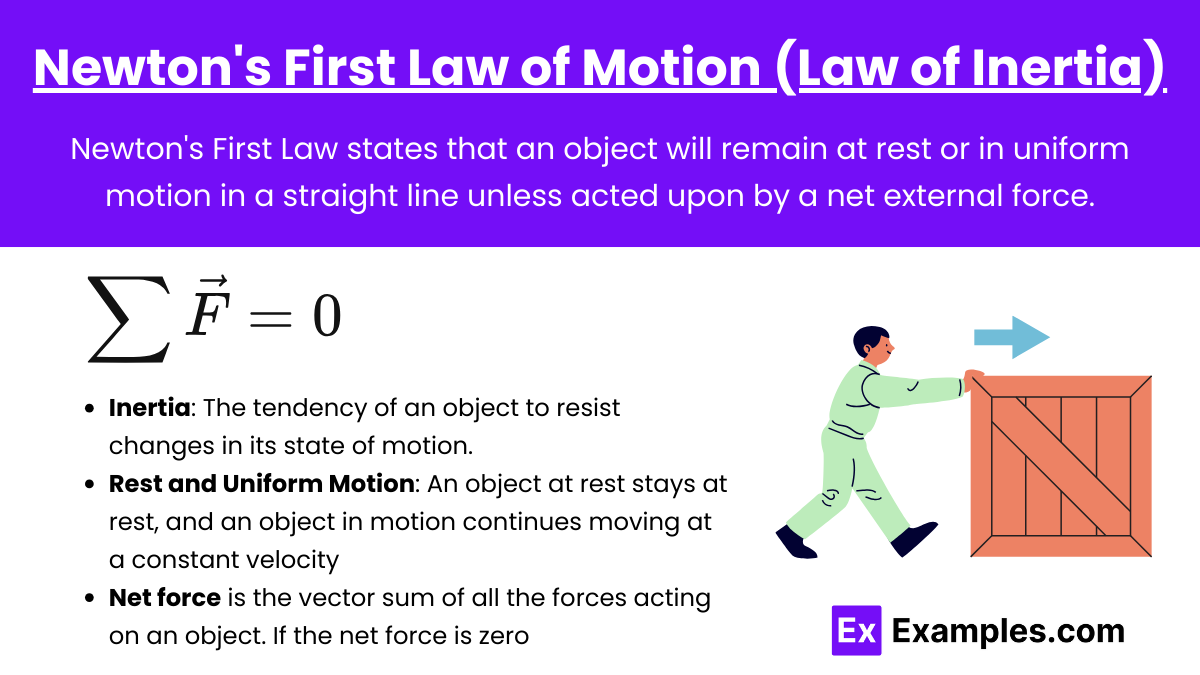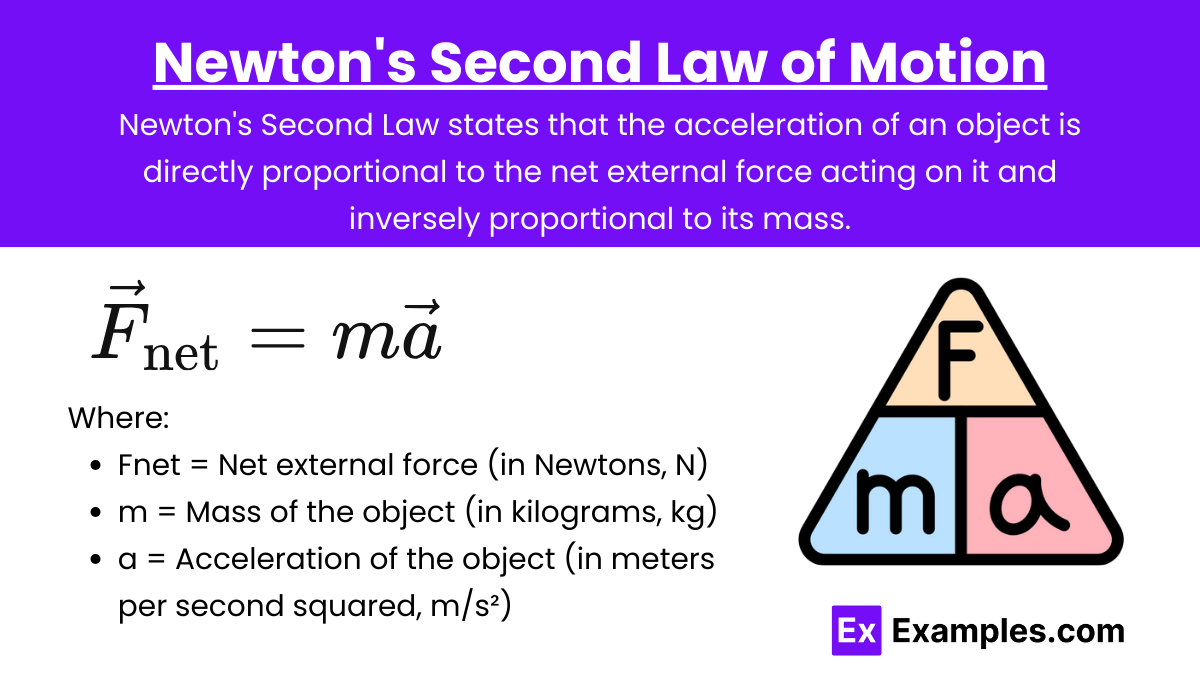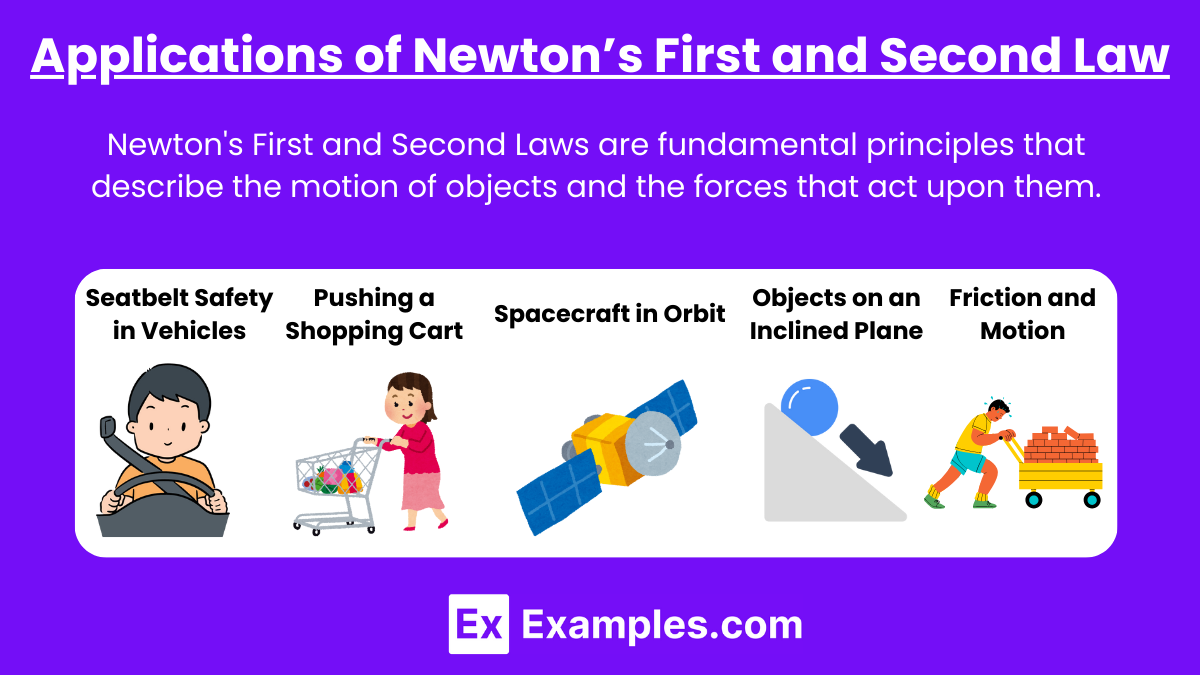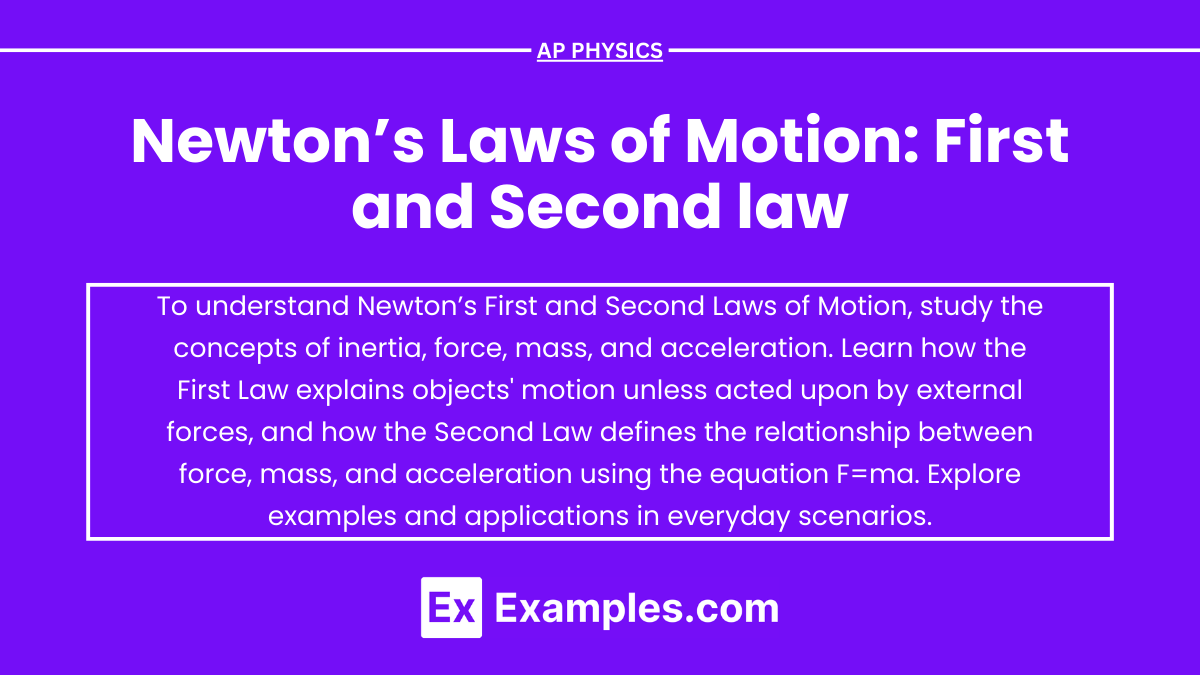Newton’s First and Second Laws of Motion are fundamental principles in physics that describe how objects respond to forces. The First Law, known as the Law of Inertia, explains that objects will remain at rest or in uniform motion unless acted upon by an external force. The Second Law relates the force applied to an object to its mass and acceleration. A solid understanding of these laws is crucial for success in AP Physics, as they form the foundation for analyzing motion and forces in various scenarios.
Learning Objectives
When studying Newton’s First and Second Laws of Motion for the AP Physics exam, you should focus on understanding the concept of inertia and its role in motion, the relationship between force, mass, and acceleration, and how to apply these principles to various physical situations. You should also be able to draw and interpret free-body diagrams, calculate net forces, and solve problems involving equilibrium and non-equilibrium scenarios. Mastering these objectives will enable you to analyze and predict the motion of objects accurately.
Newton’s Laws of Motion: First and Second Law
Newton’s Laws of Motion form the foundation of classical mechanics, describing the relationship between the motion of an object and the forces acting upon it. Understanding these laws is crucial for mastering concepts in physics and performing well on the AP Physics Exam.
Newton’s First Law of Motion (Law of Inertia)

Newton’s First Law states that an object will remain at rest or in uniform motion in a straight line unless acted upon by a net external force. This law is often referred to as the Law of Inertia.
Mathematical Expression:
![]()
Key Concepts:
- Inertia: The tendency of an object to resist changes in its state of motion. The greater the mass of an object, the greater its inertia.
- Rest and Uniform Motion: An object at rest stays at rest, and an object in motion continues moving at a constant velocity unless a force causes a change.
- Net force is the vector sum of all the forces acting on an object. If the net force is zero, the object’s motion will not change.
Newton’s Second Law of Motion

Newton’s Second Law states that the acceleration of an object is directly proportional to the net external force acting on it and inversely proportional to its mass. This law is the foundation for solving many physics problems.
Mathematical Expression:
![]()
Where:
- Fnet = Net external force (in Newtons, N)
- m = Mass of the object (in kilograms, kg)
- a = Acceleration of the object (in meters per second squared, m/s²)
Key Concepts:
- Force and Acceleration: The greater the force applied to an object, the greater its acceleration. Similarly, for a given force, an object with more mass will have less acceleration.
- Direction of Forces: The direction of the net force is the same as the direction of the acceleration.
Applications of Newton’s First and Second Law :

Newton’s First and Second Laws are fundamental principles that describe the motion of objects and the forces that act upon them. These laws have a wide range of practical applications in everyday life, technology, and science.
1. Seatbelt Safety in Vehicles:
- First Law (Inertia): When a car suddenly stops, passengers continue moving forward due to inertia. Seatbelts apply an external force to stop this motion, preventing injury.
- Second Law (Force and Acceleration): The seatbelt exerts a force on the passenger to decelerate them at the same rate as the car, ensuring that the passenger’s acceleration matches the car’s deceleration.
2. Pushing a Shopping Cart:
- First Law (Inertia): A stationary cart will not move unless a force is applied, and a moving cart will continue moving in a straight line unless a force changes its motion.
- Second Law (Force and Acceleration): The acceleration of the cart depends on the force you apply. A greater force results in a greater acceleration, and a heavier cart requires more force to achieve the same acceleration.
3. Spacecraft in Orbit:
- First Law (Inertia): A spacecraft in orbit continues moving in a straight line at a constant speed because no external force (neglecting air resistance) acts to change its motion.
- Second Law (Force and Acceleration): The gravitational force from the Earth acts as the centripetal force, causing the spacecraft to accelerate towards the Earth, keeping it in orbit.
4. Objects on an Inclined Plane:
- First Law (Inertia): An object on a frictionless incline will not move unless a component of gravitational force acts along the plane.
- Second Law (Force and Acceleration): The component of gravitational force along the incline causes the object to accelerate down the slope, with the acceleration depending on the angle of the incline and the object’s mass.
5. Friction and Motion:
- First Law (Inertia): Without friction, an object in motion would continue moving indefinitely. Friction is the external force that slows down and eventually stops the object.
- Second Law (Force and Acceleration): The amount of frictional force affects the acceleration. Higher friction results in a greater deceleration, slowing down the object more quickly.
Examples
Example 1: A Book on a Table
A book resting on a table will remain at rest unless an external force, like a push, is applied to move it. This demonstrates Newton’s First Law of Motion, which states that an object at rest will stay at rest unless acted upon by an external force.
Example 2: A Car Suddenly Stopping
When a car comes to an abrupt stop, passengers inside the car lunge forward. This is because their bodies were in motion along with the car and tend to remain in motion even when the car stops, illustrating the concept of inertia.
Example 3: Pushing a Shopping Cart
When you push an empty shopping cart, it accelerates quickly because it has less mass. However, when the cart is full of groceries, it requires more force to achieve the same acceleration. This example showcases Newton’s Second Law of Motion, where the acceleration of an object depends on the net force acting on it and its mass.
Example 4: Kicking a Soccer Ball
If you kick a soccer ball with a light tap, it moves slowly. But if you kick it hard, it moves much faster. The acceleration of the ball is directly proportional to the force applied, demonstrating Newton’s Second Law, F=ma.
Example 5: Launching a Rocket
In launching a rocket, a large amount of force is exerted by the engines to overcome the rocket’s mass and the force of gravity. The greater the force, the greater the acceleration, enabling the rocket to lift off the ground. This is a clear application of Newton’s Second Law of Motion.
Multiple Choice Questions
Question 1
A book is lying at rest on a table. Which of the following best explains why the book remains at rest?
A. There is no force acting on the book.
B. The forces acting on the book are balanced.
C. The force of gravity pulls the book downward, and the table exerts an upward force.
D. The book is too heavy to move.
Correct Answer: B. The forces acting on the book are balanced.
Explanation:
Newton’s First Law of Motion, also known as the law of inertia, states that an object at rest will stay at rest unless acted upon by an unbalanced force. In this scenario, the book remains at rest because the downward gravitational force is exactly balanced by the upward normal force exerted by the table. As the forces are balanced, there is no net force acting on the book, and thus it remains stationary.
Question 2
A car accelerates at 2 m/s² when a force of 1000 N is applied. What is the mass of the car?
A. 200 kg
B. 500 kg
C. 1000 kg
D. 2000 kg
Correct Answer: B. 500 kg
Explanation:
Newton’s Second Law of Motion is given by the equation F=ma, where F is the net force applied to an object, mmm is the mass of the object, and a is the acceleration. Rearranging the formula to solve for mass, we have: m= F/ a
Substituting the given values: ![]()
Therefore, the mass of the car is 500 kg.
Question 3
Which of the following scenarios is an example of Newton’s First Law of Motion?
A. A person pushes a cart, and it accelerates.
B. A hockey puck sliding on ice continues to move in a straight line at a constant speed.
C. A ball falling to the ground accelerates due to gravity.
D. A car slows down when the brakes are applied.
Correct Answer: B. A hockey puck sliding on ice continues to move in a straight line at a constant speed.
Explanation:
Newton’s First Law of Motion describes the concept of inertia, stating that an object in motion will continue to move at a constant velocity in a straight line unless acted upon by an unbalanced force. In this case, the hockey puck continues to slide in a straight line on the ice with a constant speed because there are no unbalanced forces (like friction or air resistance strong enough) to alter its motion. This is a classic example of an object maintaining its state of motion, illustrating the principle of inertia.


